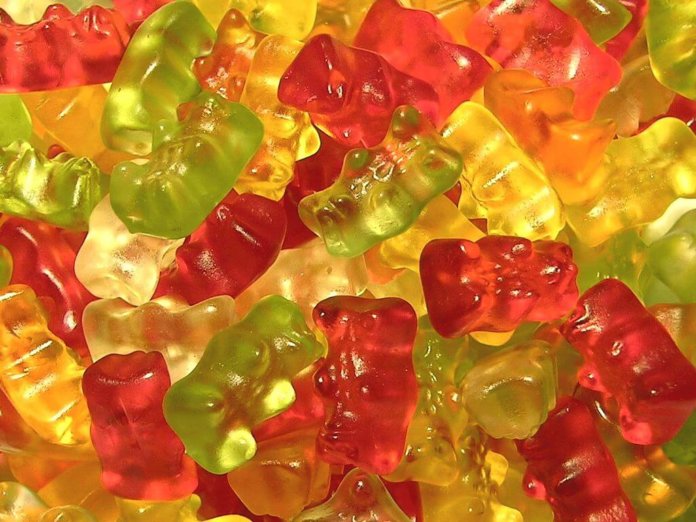
As one of the largest manufacturers of gummy and jelly sweet candies in the world, Haribo has become a household name for people with a sweet tooth, from its home country of Germany to the U.S., where its popularity exploded. Haribo, best known for inventing the beloved gummy bear, shows no signs of stopping, with plans to expand its operations in established markets while it pushes into new markets like China and Brazil.
Though many are familiar with Haribo’s tasty candies, few know about the Haribo family story. The company is in many ways, the ultimate family business, with much of its success credited to an innovative father and son, deeply passionate about not only creating delicious candy but marketing it in ways that could captivate children and adults alike. This is the story of Haribo and the Riegel family.
Haribo’s Humble Beginnings
It’s hard to think of a more simple start for Haribo. In 1920, Hans Riegel, a confectionery factory worker in Bonn, Germany, decided to put his skills to use and make his own candy, with nothing more than a bag of sugar, a marble slab, a kettle, an oven and a rolling pin. This original incarnation of the Haribo brand, named for Hans Riegel of Bonn, was a humble operation, with Hans making hard candies in his kitchen while his wife delivered them on her bike. But after two years and weak profits, the Riegels knew they needed change.
The couple found their answer in a stroke of inspiration. As a fan of trained bears that performed across European street fairs and festivals, Riegel created the Tanzbär, or “dancing bear,” a fruit-flavored gelatin candy shaped into little bears. Unlike the small modern-day Gold-Bear gummy bears however, these were much larger and people bought them in pairs of two. The affordable, colorful treats became an instant hit among the children of Bonn, and Haribo grew rapidly, employing more than 400 employees producing 10 tons of candy per day.
However, the outbreak of World War II would be a disaster for the company, forcing it to downsize to just 30 employees as Germany struggled to access raw materials. Family troubles also affected operations, as Riegel’s sons were captured and held as prisoners of war by the Allied forces. By 1946, Riegel Sr. himself passed away, leaving the company without a leader. As the war drew to a close and the Riegel sons, Hans and Paul were released, returning home to a family business that was in tatters.
Rebuilding Haribo
Despite what they had endured, the Reigel brothers took over the family business with enthusiasm, with Hans handling distribution, sales, and marketing while Paul oversaw production. By 1950, the company was flourishing once more, employing more than 1,000 people. A decade later, the iconic Haribo Gold-Bear, the company’s flagship candy, was created.
The Gold-Bear was one of many creations that Hans Jr. was credited with, along with the popular Happy Cherries and Piratos coins. Hans was also credited with developing the current incarnation of the company’s famous slogan, “Kids and grown-ups love it so — the happy world of Haribo,” based on the belief that candy should be appealing to both kids and adults. The combination of effective marketing and appealing products helped Haribo to become extremely popular all over Europe, especially in its native Germany. But Haribo had its eyes on cracking one elusive market, the U.S.
Gummy Bears Take Over the World
Even as German food importers brought Haribo candies to America and sold them priced at gourmet levels, Riegel saw that there was much work left in making a true push into the American market. The first step was the incorporation of Haribo of America in the 1980’s, but Hans was smart enough to know that simply translating original practices and products over to America would not be enough.
Under his leadership, the company began packaging its candies in weights that American families were used to, in bag designs that were more consistent with those found in American supermarket designs rather than those in traditional German ones. He was also instrumental in creating boxed versions of Haribo candies for distribution at movie theatres. These changes led to an explosion in popularity of Haribo products in the U.S., to the point that Haribo could not keep up with demand.
The Haribo success also became a pop culture phenomenon of itself, as kids soon began craving gummy versions of all kinds of animals and characters beyond the original bear. Gummy worms, gummy colas, and sour patches soon followed, and the success was so great that Disney even produced a cartoon series based on the candy called Disney’s Adventures of the Gummi Bears. This gummy boom would also lead to the rise of several other copycat companies, but none were able to replicate Haribo’s success. Hans reportedly stayed creative into his old age, looking to comic books, television, and even video games as inspiration for creating new kinds of candy.
Hans Riegel Jr. passed away at the age of 90 in 2013, having amassed an estimated net worth of nearly $3 billion and leaving behind two nephews to lead the company. And though the next generation will certainly have big shoes to fill, the Haribo product and business model will by all accounts ensure that people of all ages in Europe and beyond will be enjoying these special sweets for generations to come.









